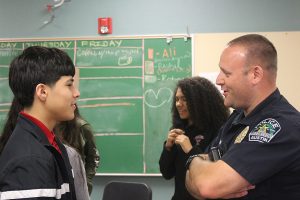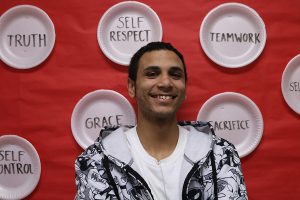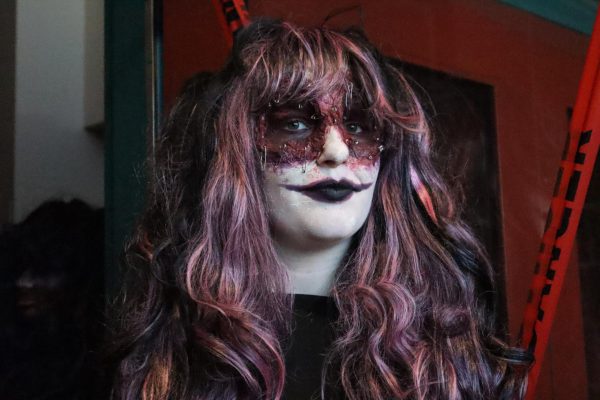Behavior program expanded to feeder schools nearby
Senior Javier Angel Villareal participates in a Restorative Justice circle. The Restorative Justice program helps students express themselves among others.
February 23, 2017
Trust. It’s the fundamental value that is lacking when disagreements occur between students and teachers.
And when students and teachers don’t trust each other it’s hard to make any progress when schools resort to punishing students for misbehavior originating from misunderstandings.
At least that’s what Restorative Justice counselor Dionte McClendon believes.
McClendon is one of several counselors that have been working to help repair and grow trust between students and faculty at Akins since the Restorative Justice (RJ) program started at Akins last year.
While the program is gaining acceptance among teachers and students, it still faces challenges. “Of course, it’s still something new to students, especially incoming freshmen, and students that have had issues before and they see us as the people who resolve the trouble,” McClendon said. “Mainly, because people don’t understand the overall (message). In some people’s world, it’s a place where you come to share your feelings, and it takes a lot of trust with people, and vulnerability, to open up about something that’s bothering you and get down to what the issue is.” McClendon said Restorative Justice has several layers.
“The purpose of it here (at Akins) and other schools, is a school wide approach to give support and prevention from students and staff, to have intentional conversations of issues we may face,” he said. “On supporting students through their issues, whether it be academically or financially, give advice on family issues and relationship issues. We try to prevent fights/altercations, tensions between a teacher and a student, relationships and on the family side, as well.” McClendon and his fellow RJ staff members use “intentional conversation” to help students get down to the root of what they are going through. McClendon said they work to make the student understand that they care for them.“We aren’t going to throw you away, put you in ISS, or suspend you,” he said. “We want to know what’s really going on.” Though Restorative Justice initially had some negative reactions from teachers, the staff has worked to help improve the referral process and communication with teachers.
Students can be referred to the Restorative Center by a teacher going to the Restorative Center, and telling a staff member about a student they’re having ongoing troubles with. McClendon said the RJ process should not be seen as a “magic spell” solution to fixing a problem.
“Most of the problems are misunderstandings,” he said. “It could be that they have tension with a teacher, not understanding the work, have problems at home. They feel that the teacher doesn’t want to understand them, which is really the scope of the things we have. It all really boils down to the communication of humanity.” One of the shared goals between the RJ and administration staff of the school is to lower the rate of student suspensions.
Even though some people were skeptical at first, Principal Brandi Hosack pushed to start the program last year. She said the program has helped administrators and teachers rethink how they address behavior problems across the campus.
“It’s taught to us to reformulate how we talk to each other, how adults talk to the students,” she said. “And how students talk to students, how students talk to teachers. It has helped us much more than just what happens in the Restorative Justice room. It’s really about what happens all over the campus, everyday.” Hosack said she and other principals at feeder middle and elementary schools for Akins are working to expand to the program to younger students.
Through the restorative practices, in the elementary and middle schools, students will have the skills to talk to teachers and their fellow peers. The whole idea is to give the students the necessary skills to work with others, and to have students work well with adult figures.
Administrators said they hope the expansion will; give the students a chance to advocate for themselves, diffuse an altercations, and help them control their anger. “If they can show up to high school, already having those skills, our job becomes much easier,” Hosack said. “It’s not about our job; we can get down to the business of learning. We can build those relationships in elementary and middle (school), and foster those in high school. That’s what people talk about, 21st Century Skills, it’s that you’re supposed to graduate, go into the workforce, go to college, and work with other people. It’s the way, in which, we are hoping to prepare our kids.”










